From another article by our experts, you will learn about the dangers of scuba diving without proper physical, moral, informational, and equipment preparation. You will become familiar with the main types of dangers in diving and receive valuable advice on how to avoid underwater mishaps and minimize the consequences if an incident does occur. So, is scuba diving dangerous in general, and how can you make it safer? How dangerous is scuba diving for individuals with chronic illnesses? Can scuba diving be dangerous at night or alone? Let’s find out.
Key Safety Rules Underwater

Scuba diving is one of the active and moderately extreme forms of recreation, as well as a hobby and professional sport. It is rapidly gaining popularity on all inhabited continents, including among kids and teenagers. However, it is important to remember that the world’s oceans offer not only indescribable beauty and unforgettable experiences but also a significant number of potential risks. Despite many considering these activities to be relatively harmless exotic pastimes rather than extreme sports, there are still dangers involved.
Yes, according to global statistics, ordinary swimming and horseback riding lead to significantly higher rates of injuries and fatalities than diving. For example, fatalities from diving in the USA average about 2 cases per 100,000 divers per year. The number of deaths among horseback riders is 100-150 per the same number of riders. But think about it — would you want to be one of those two in a hundred thousand? Probably not. We will come back to this question later, so make sure to read the publication to the end as there is still a lot of useful information!
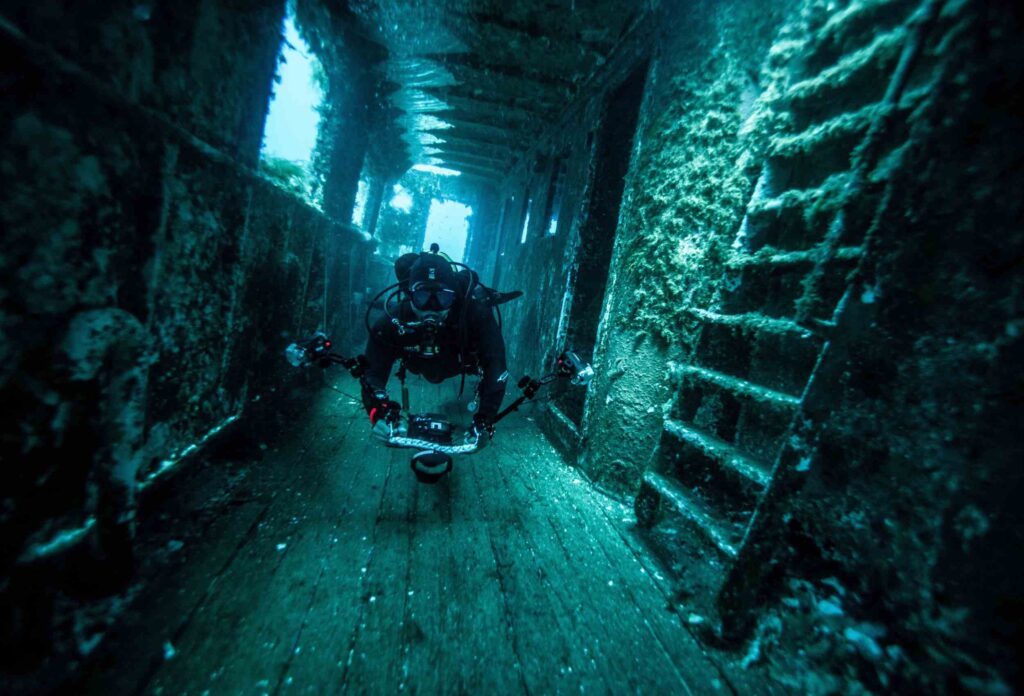
To ensure your safety, it is necessary, firstly, to undergo appropriate training and obtain a diving certificate. Yes, you can dive without one, but in this case, it should only be done in limited, particularly safe waters and accompanied by an experienced instructor. And still, only after completing a basic course to reduce the scuba diving dangers.
However, besides completing and successfully passing proper training and keeping your skills up to date (which is equally important), every diver can do many things to ensure safe diving and avoid incidents related to underwater activities. For example:
- Maintain diving equipment in good condition and check it before each dive.
- Listen to advice from experienced colleagues in the places where you plan to dive, to be aware of the plan and any local hazards.
- Study weather forecasts on specialized resources, paying attention not only to air temperature but also to diving conditions in your chosen region.
- Never dive alone. A buddy is not only good company but also an additional source of safety.
- Always check your buddy as thoroughly as you check yourself. And let them do the same with you and your equipment.
- Be prepared for the dive, both in terms of general health and how you feel throughout the day. Of course, no alcohol.
- Do not touch anything or anyone! Many creatures can be dangerous if provoked.
- Travel safely: from sun protection measures to proper storage of equipment on the boat.
- Know your limitations and stick to them, without crossing boundaries in search of unnecessary adrenaline and meaningless, dangerous thrills.
- Constantly monitor the remaining oxygen, pressure, and other parameters. Treat your air supply like the remaining fuel in a gas tank—it should always be more than the amount needed to get to the refueling station, agree?
- Avoid the most dangerous scuba diving locations. There are plenty of less extreme locations in the world.
- Do not approach marine life too closely, even if they seem harmless and cute to you. In the next section, you will find out why.
- Try to dive during daylight hours, with a margin of safety. Despite the intriguing allure of nighttime diving, the risk is not justified and can be very dangerous for unprepared divers.
- Before starting your activities, make sure to obtain specialized insurance that covers you during water and underwater activities. It won’t protect you from injuries or, even worse, death, but it will prevent financial disaster if you need treatment after a dive, especially abroad.
These recommendations apply to all divers, from beginners to the most experienced instructors and scientists conducting underwater exploration or other scientific activities.
How is Scuba Diving Dangerous
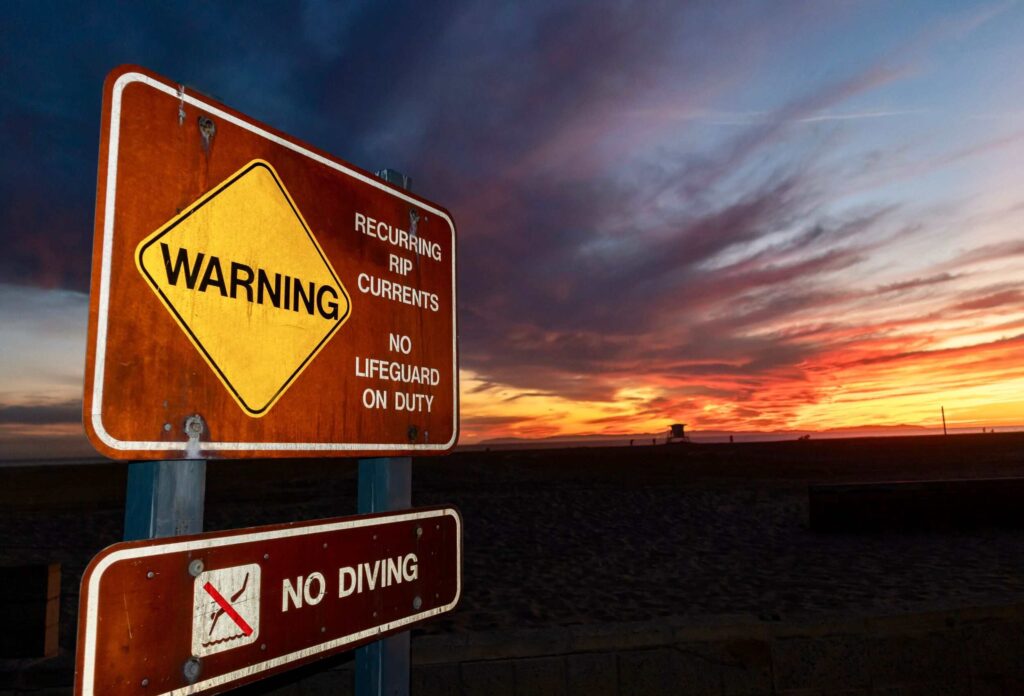
As we have already mentioned, objective statistics analyze the facts and assure that the potential common dangers of diving with scuba gear in the sea are considered low. They are lower than long-distance running or snowboarding, for example.
However, there are numerous risk factors that should be taken into account. Some of them are definite indications to stay on the shore, and by that, we mean health contraindications. First and foremost, this applies to:
- Cardiovascular diseases characterized by unstable functioning of the cardiovascular system and contraindications to physical exertion.
- Having cardiac pacemakers and artificial heart valves is a strong argument for refraining from diving to any significant depth. For individuals with cardiac pacemakers, the answer to the question of whether it is scuba diving dangerous at 30 feet (10 or more meters) would be affirmative. Unreal beauty can often be found even at a depth of 15 feet, with the risks being significantly lower.
- Asthma, cystic fibrosis, and other serious respiratory organ diseases (pleura, lungs, etc.).
- Type 2 diabetes.
- Epilepsy – a seizure can become an insurmountable obstacle underwater and even lead to a fatal outcome.
Otherwise, there are no drastic restrictions, but a general satisfactory well-being is still a must.
Dangerous Marine Creatures for Scuba Diving
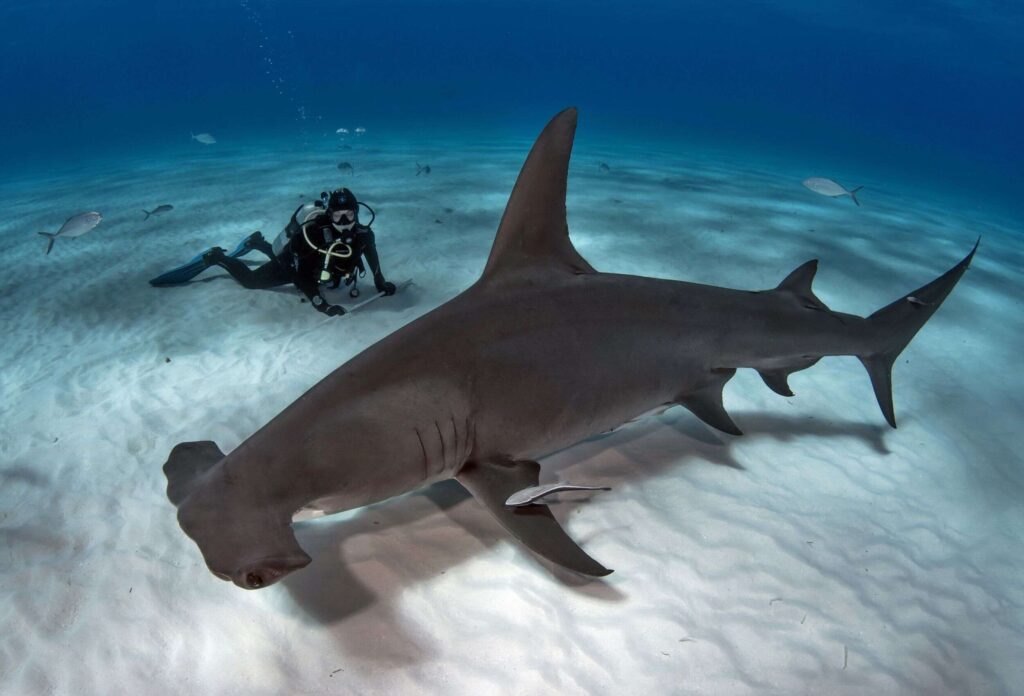
Contrary to the common belief among uninformed individuals, the danger to divers is posed not only, and not even primarily, by sharks, but by numerous other marine creatures, many of which are incredibly toxic. Let’s briefly discuss the most common and unsafe ones. Let’s start with sharks:
- Potential threats to divers can come from great white, tiger, reef sharks, as well as mako sharks and hammerhead sharks.
- Physalia physalis, chironex fleckeri, and carybdea marsupialis.
- Dangerous and spiny anemonefish (also known as seemingly harmless clownfish).
- Poisonous cone snails: geographus, textile, and marmoreus.
- Sea snake, as well as ringed and black-and-white sea snakes.
- Large crabs and lobsters (suicidal crab, giant crab, oceanic lobster).
- Some species of sea urchins.
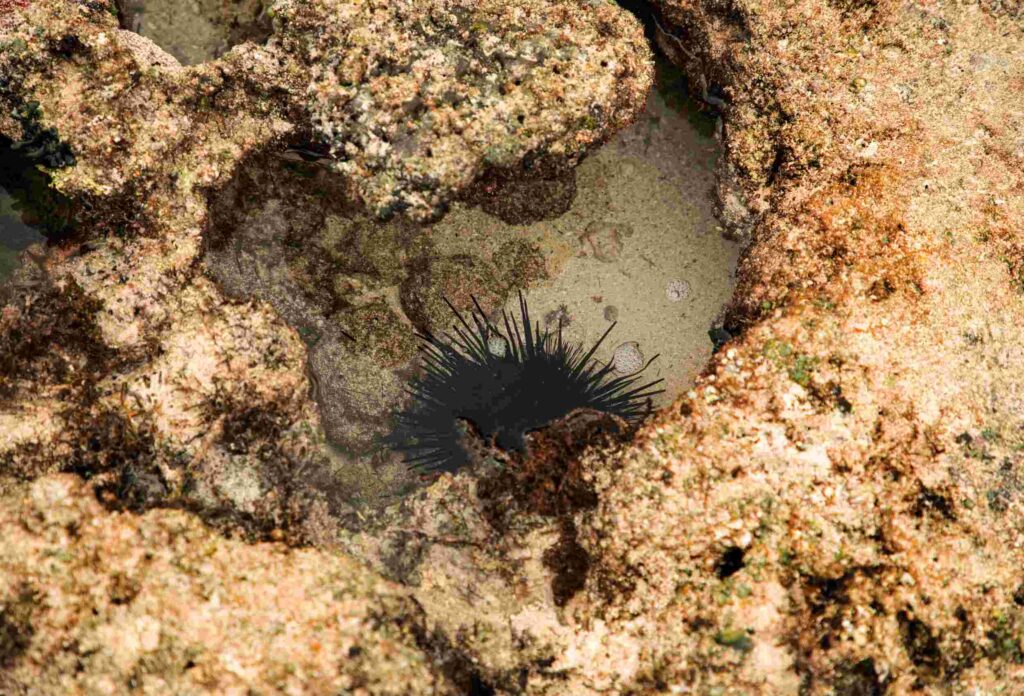
Encounters with these and other inhabitants of the world’s oceans can carry potential dangers. Sometimes the risks can be quite high.
Now that you know about the main dangers that divers may face, let’s talk about where these dangers are concentrated the most.
Other Risks, Hazards, and Possible Injuries

It is important to understand that the fauna is only a small part of the dangers you may encounter. Among the “non-living” risks, the following deserve special mention:
- Marine currents: they can be among the most challenging and unpredictable obstacles. They can cause air depletion and become a barrier to timely ascent to the surface.
- Underwater caves for diving, reefs, and rocks – dangerous places for scuba diving. Their sharp edges, as sharp as razors or scalpels, can cause serious injuries, which, when exposed to saltwater, can become painful and non-healing conditions.
- Injuries related to pressure – a very dangerous and unfortunately common type of risk for both experienced divers and beginners.
Among the latter types of injuries, the following can be distinguished:
Decompression Sickness

Developing decompression sickness (DCS). It is one of the most common risks. The term is used to describe a condition that occurs as a result of a rapid decrease in the surrounding pressure. This mainly happens during diving, especially deep dives since when you dive with compressed air, your body receives additional oxygen and nitrogen. While your body uses oxygen, nitrogen dissolves in the blood and remains there during the dive.
When you ascend from the depths of the sea or a lake to the water surface, the water pressure around you decreases. With rapid ascents, nitrogen does not have enough time to off-gas and forms bubbles in the tissues and bloodstream. These microbubbles can damage your blood vessels and block normal blood flow.
Nitrogen Narcosis (Martini Effect)

Nitrogen narcosis, also known as the “rapture of the deep” or the Martini effect. It is a temporary condition experienced by deep-sea divers diving below 100 feet (30 meters). The condition is caused by breathing nitrogen at high partial pressures, leading to symptoms of intoxication. This can include feelings of euphoria, disorientation, difficulty concentrating, hallucinations, etc. The condition usually subsides after surfacing, but in some cases, it can increase the risk of developing other conditions, such as DCS.
Barotrauma of the Ear
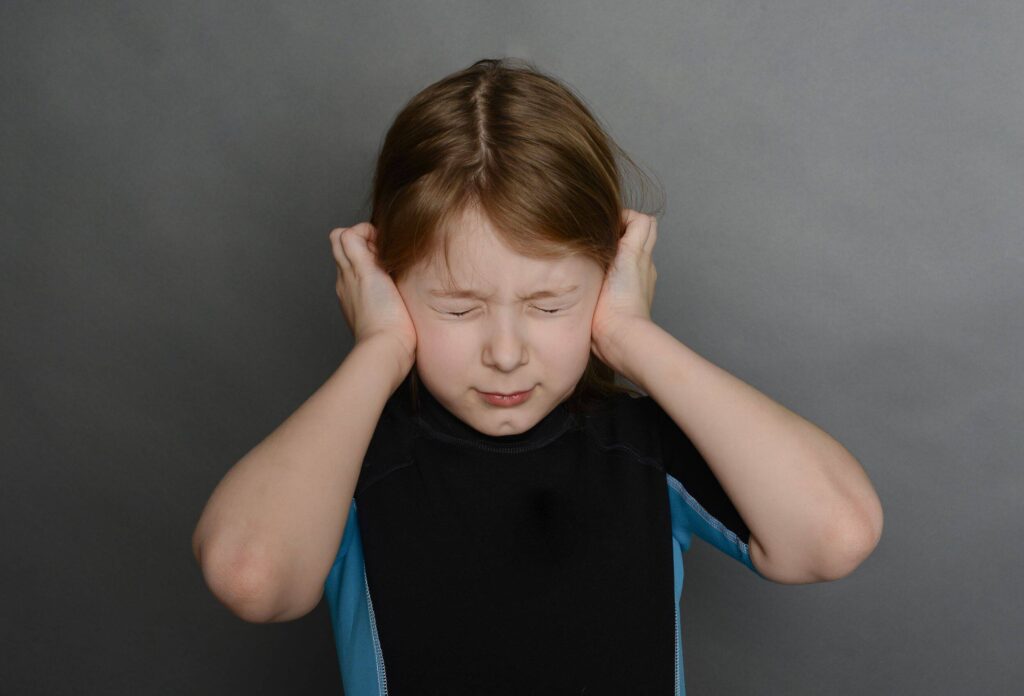
Barotrauma of the ear is also one of the common health risks associated with diving, caused by pressure – not a sudden drop, but an increasing one. There are various types of barotrauma, including sinus barotrauma, which can be dangerous for the eyes, teeth, and lungs, but the most common type is middle ear barotrauma. It can cause intense pain, fluid buildup, bleeding, and even hearing loss.
Divers often experience middle ear barotrauma when they fail to equalize the pressure in the middle ear during descent.
Hypothermia

Hypothermia also frequently occurs. Simply put, it’s the condition of being excessively cold. If this condition is not treated promptly, the consequences can be quite serious.
Treatment Costs for Some Diving-Related Injuries
Below is a summary table of the treatment costs for just three types of illnesses in various dangerous scuba diving sites around the world.
| Country | Decompression Sickness | Barotrauma of the Ear | Hypothermia |
| Estimated cost of treatment at a local clinic (USD) | |||
| Costa Rica | 2,200 – 5,500 | 500 – 1,500 | 500 – 1,000 |
| Mexico | 2,300 – 5,800 | 500 – 1,700 | 500 – 1,200 |
| Belize | 2,200 – 5,500 | 500 – 1,500 | 500 – 1,000 |
| Egypt | 2,400 – 6,000 | 600 – 1,800 | 600 – 1,200 |
| Maldives | 2,200 – 5,500 | 500 – 1,500 | 500 – 1,000 |
| Australia | 2,600 – 6,500 | 700 – 2,000 | 700 – 1,500 |
| Malaysia | 2,300 – 5,800 | 500 – 1,700 | 500 – 1,200 |
| Thailand | 2,500 – 6,500 | 600 – 2,000 | 600 – 1,500 |
| Philippines | 2,200 – 5,500 | 500 – 1,500 | 500 – 1,000 |
| Indonesia | 2,400 – 6,000 | 600 – 1,800 | 600 – 1,200 |
There are still many other injuries, risks, and dangers. However, everything we have covered in this article should be enough to understand that insurance is a necessary companion for every scuba diver and a reliable way to reduce the risks of scuba diving dangers and ensure treatment and recovery through insurance coverage, whether in the Caribbean, Hawaii, or the Great Barrier Reef.





